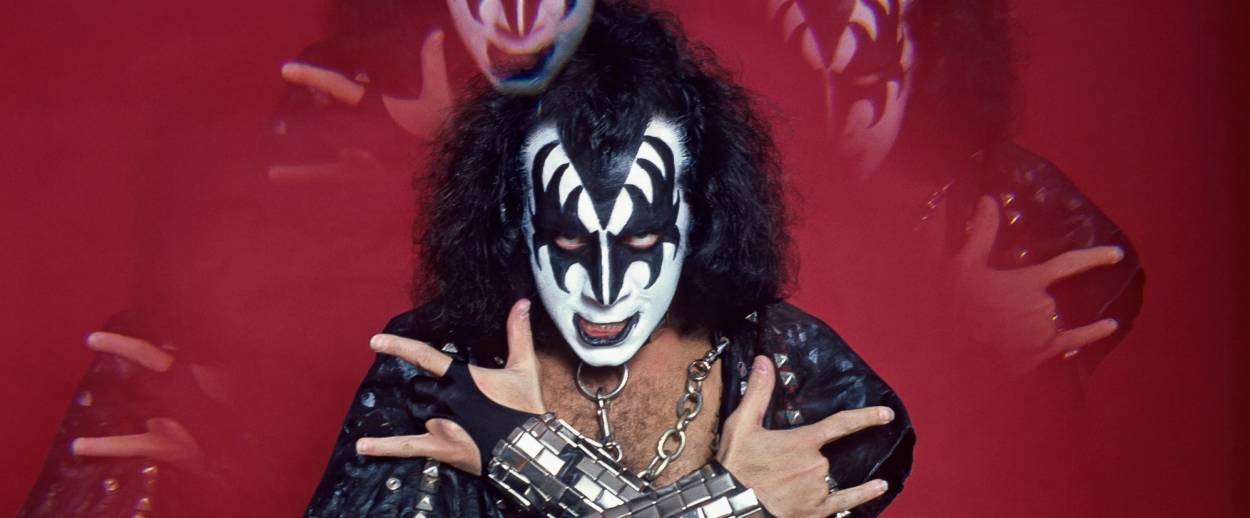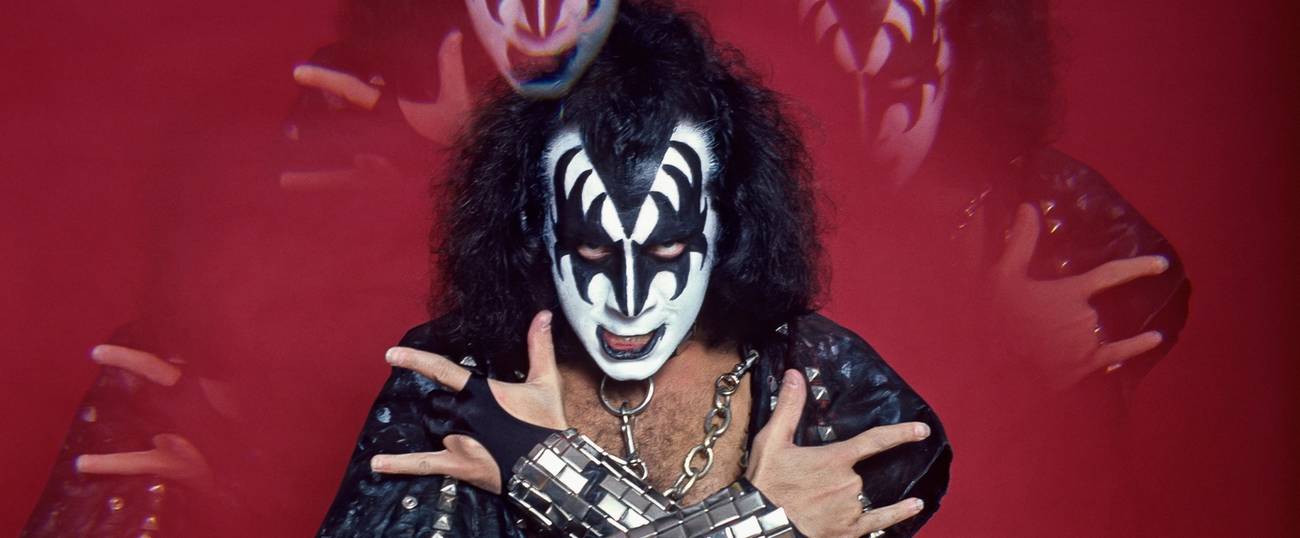Kiss and Tell
A new book of photographs by Lynn Goldsmith, documenting rock’s most-most band, is a runaway bestseller




“I’m not looking to just have a bunch of pictures in a book. I want to make this a sacred object,” Lynn Goldsmith said of Kiss: 1977-1980, which the acclaimed rock photographer says is now the fastest-selling title that the storied art publisher Rizzoli has ever produced. When a heavy, silver-gilded volume arrived at my apartment a few days later, I understood exactly what she meant. Sure, Kiss’s “Alive!” is probably the greatest album of all time (like, name a better one), but I could never quite get past the nagging suspicion that the costumed hard rock outfit was little better than a novelty act, or at least less musically serious than other loud American bands of the era. In truth, the book, whose initial run of 8,000 sold out in a single day last October and which is now in its second printing, makes a strong argument that Kiss renders the usual aesthetic judgements trite, if not totally irrelevant. In one of its first images, spread across two pages, a shirtless Paul Stanley crouches mid-guitar lick—biceps bulging, chains hugging black-leather boots, lipsticked mouth sealed in almost Buddha-like serenity and eyes deadlocked on the camera, with the whites screaming against the shadows of his facepaint and the Kiss logo streaked in flashing lights overhead. As creators of pure image, there have been few bands greater than Kiss, and no photographer was better at capturing their power than Goldsmith. Her book is as as physically and metaphysically weighty as a Gutenberg Bible, and it took me hours to summon the courage to even take it out of its plastic wrap.
Goldsmith shot nearly every major artist of the 70s and 80s, along with scores of album covers—highlights include David Bowie appearing to walk straight into outer space during an early 80s show at Radio City Music Hall, and equally otherworldly photos of Michael Jackson prancing under a rainbow tunnel of neon lights. She told me that it’s her necklace that Patti Smith is wearing on the front of the 1978 album “Easter,” which she also shot. “That’s very Patti, you know,” Goldsmith said of the art-rocker’s pose on the cover, where she thrusts out her chest, shows off a tuft of armpit hair, and stares inscrutably downward, away from the camera.
Goldsmith’s bond with Kiss was especially close, even though she never really loved the band’s music—“They know how I feel,” she said. Kiss didn’t really care whether Goldsmith appreciated its work or not. The more important thing for them is that she understood the all-consuming theatricality that the group strived for, and that her photos advanced its revolutionary idea of rock performance as a vehicle for world-creation. Over the course of the three years that her book covers, Goldsmith says she “helped to make visual statements that really supported what their idea for Kiss was.”
Even when matched with the most visual American rock band in history, Goldsmith found ways to push the group’s ethos into new and unexpected directions. I met Goldsmith at the Morrison Hotel Gallery in New York’s Greenwich village, a small upstairs space dedicated to “fine art music photography,” a provocatively specific concept that a band like Kiss fully vindicates. On one wall was a photo of Gene Simmons standing on a marble platform hemmed in by a menacing pair of neo-classical columns, flourishing a red cape as if he were a vampire beckoning victims into his lair. It turns out the photo was taken about 100 blocks north of where we stood. “We took a bus up Madison Avenue and in typical New York fashion no one really paid any attention to us,” she recalled. “I just explained to him what I wanted to do: That I always thought he was like a work of art, so he should really be on a pedestal at the Metropolitan Museum.” She says it’s her favorite image she ever captured of the band. In a just-as-disarming studio shot, a fully costumed and body-armored Simmons holds the petite Goldsmith in his arms, with the Kiss co-frontman looking somewhere between a Transformers robot and a movie monster—or at least like something not entirely of this world. “It shows I trusted Gene,” Goldsmith says of the photo, “because I really don’t like getting picked up.”
The intimacy of the quotes and images in Goldsmith’s book, which includes photos of Ace Frehley putting on makeup and deep reflections on fire-spitting from Simmons (“Spitting fire is something I would not recommend to anyone. If you don’t move the fire source away from your face, the largest end of the fireball can eat its way to your face”) comes from Goldsmith’s friendship with the band. There’s a mutual fondness that comes through in the photos, even if, in Goldsmith’s case, it didn’t extend to the band’s actual music. Goldsmith, Paul Stanley, and Simmons are all Jewish—“Paul, Gene, and I can speak a little bit of Yiddish, and it’s just a bond,” she said. Simmons’s real name is Chaim Witz, and he still knows enough Hebrew to have engaged Israeli Prime Minister Benjamin Netanyahu in about 15 minutes of conversation when they ran into each other the week of the United Nations General Assembly’s opening, while Simmons was having dinner with Goldsmith. It wasn’t hard for Simmons to get the PM’s attention, even with his security detail in tow: “Gene’s very tall, with or without the shoes, he’s like six-foot three or something.”
Like Simmons, Goldsmith was raised by a single working mother, although Simmons’s survived the Holocaust and moved him to the US from Israel when he was eight. Goldsmith photographed Simmons with his mother, a shot where a pant-suited Flora Klein, who is still alive, is somehow wearing the weirder of the two expressions. A note that she wrote on the back-side of the photo, included in Goldsmith’s book and written in the endearingly broken spelling of a woman for whom English was a third or fourth language, ranks as one the most touching parental affirmations recorded in American Jewish culture: “Chaim is a charming monster… he is the greatest star and entertainer in the world.”
For a photographer who had won the band’s trust and admiration, Kiss offered an embarrassment of such riches. Goldsmith says that shooting some artists is “like being a psychologist. There’s a lot of pleasure from me in kind of opening the door for that person and making them feel more powerful onstage.” She recalled forcing Bryan Adams to change out of the hideous green jacket he wore to the shoot for the cover of ‘You Want It, You Got It’ in 1981. “But with Kiss I didn’t have to do any of that. You know, they knew who they were.”
Over time, Goldsmith got to know who they were, too. Despite their wild onstage persona, Simmons and Stanley barely drank or did drugs. By rock star standards, Simmons was firmly tethered to reality, and protective of a sense of mystery for the band that verged on self-imposed anonymity. “Paul and I went to a club” during the band’s late-70s peak, Goldsmith recalled, “and he couldn’t have gotten in if it wasn’t for me. They were letting me in.” The members of Kiss would do their own makeup together for over two hours before a show, a ritual ascension into some different and better realm.
“Gene and Paul are very different,” Goldsmith observed. “Paul’s very much someone I would have termed a romantic. He was always looking for true love, whereas Gene didn’t really believe in that.” So what did he believe in? “Honesty.”
Armin Rosen is a staff writer for Tablet Magazine.